Content
- 1 general information
- 2 Most popular varieties
- 3 How to grow a dogwood from a stone?
- 4 How to grow from cuttings and cuttings?
- 5 Shrub care and pruning
- 6 How and when to pick berries?
- 7 The nutritional value
- 8 What can be combined with dogwood?
- 9 Useful properties of the plant
- 10 Indications for use
- 11 Can I use it during pregnancy?
- 12 Harm and contraindications
The plant got its name from the color of its fruits. In the family of Turkic languages, kizil (Tatar version - kyzyl) is translated as "red". The cultivation of this shrub is most common in the southern regions.
However, many varieties tolerate frost and drought without problems. This is explained by the fact that the dogwood has a strong root system, which goes underground for a meter or more. This allows the plant to extract moisture from both sandy soil and rocky soil.
Adult shrubs grow up to 7 meters, there are also decorative dogwood varieties that outwardly resemble a small tree up to 9 meters high.
Dogwood fruits are tied and ripen for a very long time. The plant begins to bloom in March, and the berries ripen only after 5-6 months.
Growing dogwood in the Moscow region and central Russia
The common dogwood has been cultivated by humans since ancient times. Historians say that 5 thousand years ago, settlements that were located on the territory of modern Switzerland cultivated this plant.
 Since then, about 50 varieties have been bred, which can be conditionally classified according to the following criteria:
Since then, about 50 varieties have been bred, which can be conditionally classified according to the following criteria:
- shrub crown shape;
- the size, shape and taste of the fruit;
- ripening period;
- color and shape of the leaves.
Despite the fact that dogwood has been cultivated for a very long time, on the territory of Russia it is not often possible to see a shrub growing on someone's site.
This is especially true for the middle zone, the Moscow region and Moscow. This is mainly due to the widespread misconception that the plant categorically does not tolerate frost and dies at a temperature of -15 and below. Many do not know that of all southern fruit plants, dogwood is considered the most hardy.
Of course, there are capricious species that require special care and certain climatic conditions. But dogwood varieties have long been bred, tolerating frosts even at 30-35 degrees. The only thing you need to take into account is that young shoots freeze under severe frosts, so in the spring they need to be cut. It is recommended to cover very small seedlings with rags or burlap for the first four years. Otherwise, care and planting are no different from other varieties planted in warmer areas.
For the middle lane and the Moscow region, the best option would be shrubs with an early ripening period. These varieties include:
- Elena.
- Elegant.
- Nikolka.
- Firefly.
- Vladimirsky.
- Semyon.
- Alyosha.
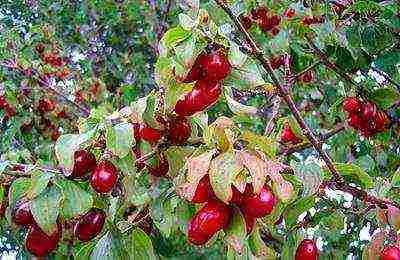 The above species are resistant to frost from -20 to -35 degrees. Thanks to the powerful root system, the plant can recover even after the death of the aerial part. The process of restoring and launching new shoots takes more than one year, therefore, in order to avoid such cases, it is recommended to insulate the fragile shrub for the winter. Although dogwood is not picky about the composition of the soil, it will develop better and faster in nutrient soils rich in lime.
The above species are resistant to frost from -20 to -35 degrees. Thanks to the powerful root system, the plant can recover even after the death of the aerial part. The process of restoring and launching new shoots takes more than one year, therefore, in order to avoid such cases, it is recommended to insulate the fragile shrub for the winter. Although dogwood is not picky about the composition of the soil, it will develop better and faster in nutrient soils rich in lime.
Tips from PROFESSIONAL GARDENERS
Many of our readers for a RICH HARVEST actively use effective biofertilizer
Biogrow
... This fertilizer is suitable for all types and varieties of cultivated plants. Allows
increase yields by 50%
NO hazardous chemicals. And all that is needed for this is to add biofertilizer to the soil 2-3 times per season.
Therefore, the dogwood bush, like any other fruitful plant, needs recharge and mulching of the soil.
The first fruits can be tasted only for 3-5 years of the seedling's life.The number of berries will constantly increase. An adult wild-growing shrub gives about 5-7 kg of fruits, and rather small in size.
Providing proper care and replenishment of the soil, you can achieve 20 kg of yield or more from a bush aged 14-16 years. Cornel has many useful properties, the description of which can be read a little below.
Characteristics of the best varieties
Most, choosing a variety, first of all start from their taste preferences and the ability to plant the species they like in a certain climate. In addition to the taste of berries, there is another characteristic that many pay special attention to - this is yield.
Below is a description of the most popular varieties that have large fruits, good yields and take root in almost any region of Russia.
Elena
This variety was bred specifically for cold regions, capable of withstanding temperatures down to -35 degrees. Kizil Elena was obtained by crossing the Starokievsky and Vydubitsky varieties in 1975. The main characteristics of the fruits:
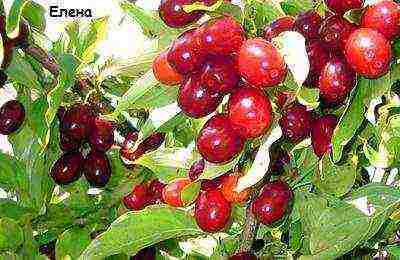 taste - sweet and sour;
taste - sweet and sour;- shape - more often oval, round is found;
- the average weight of one berry is 7-8 grams;
- color - deep red with a slight sheen;
- dense pulp, which lags behind the stone without problems.
Due to their good density, the berries can be transported for up to 30 days. The shrub begins to bear fruit in about the 3rd year. Elena has a high yield, an adult bush is capable of producing 40 kg of berries. The variety is extremely disease resistant. Ripening period - early (end of August).
Elegant
Early ripening variety - early or mid August. It was bred in 1989 by pollination of the Semyon variety. Withstands frosts down to -25 degrees. Fruit characteristics:
 the taste is sweet, with a slight sour tinge;
the taste is sweet, with a slight sour tinge;- shape - oblong, slightly flattened;
- the average weight of one berry is 6-9 grams;
- color - dark red, burgundy;
- the pulp is dense.
It can be in transportation for up to 40 days. The yield is good, from an adult bush it is possible to collect up to 45 kg of dogwood.
Resistance to viruses and diseases is high. The first fruits can be tasted 3-4 years after planting.
Nikolka
Bred in 1992 by pollination of the Yantarny variety. Ripening period is very early, falls on the end of July or mid-August. Young shoots are able to survive frost at -30 degrees. Fruit characteristics:
 the taste is sweet;
the taste is sweet;- shape - oval, slightly elongated;
- the average weight of one berry is 6-7 grams;
- color - burgundy;
- the pulp is saturated with juice, the density is medium.
The maximum transportation time should not exceed 25 days. A shrub over 15 years old is capable of producing up to 35 kg of harvest. Begins to bear fruit from about 4 years old. Disease resistance is very high.
Alyosha
This variety was bred in 1989 by S.V. Klimenko. The ripening period falls at the beginning of August, sometimes it is delayed until September. In the middle lane it feels very comfortable, it can withstand temperatures down to -35. The main characteristics of berries:
IMPORTANT!
Is your blood pressure constantly jumping? After taking the pills, does it come back after a while? Hypertension can lead to stroke, heart attack, enlargement of the heart, and ultimately heart failure. Remember! Your blood pressure will be 120/80 without chemicals and pills in just 5 days. VESSELS will be restored and cleansed if on an empty stomach in the morning ...
Read more ...
 taste - sweet and sour, aftertaste with slight bitterness;
taste - sweet and sour, aftertaste with slight bitterness;- shape - pear-shaped;
- the average weight of one berry is 6-9 grams;
- color - rich yellow;
- the pulp is dense.
The fruits can be transported within 35-40 days. Good disease resistance.
The first fruits appear in the 2nd year after planting. The yield is slightly lower than the previous representatives, an adult bush gives from 20 to 30 kg.
Firefly
The Firefly dogwood is highly prized for its berry flavor and yield.An adult shrub, whose age has exceeded 15 years, is capable of producing more than 50 kg of harvest. In addition, frost resistance is very good. The bush can withstand frosts down to -30. Description of fruits:
 taste - sweet and sour, slightly tart;
taste - sweet and sour, slightly tart;- shape - pear-shaped;
- the average weight of one berry is 6-8 grams;
- color - dark cherry;
- the pulp is very juicy, the density is average.
Transportation should not exceed 25 days. Ripening period - late August, early September. The berries do not crumble. The firefly is often planted as an ornamental variety. the shrub has an attractive pyramidal crown shape, lush foliage and an early flowering period.
Semyon
The variety was bred in 1985; has a late ripening period, which falls at the beginning - end of September. The yield of an adult plant reaches 27 kg. Description of fruits:
 taste - sweet and sour, sour prevails;
taste - sweet and sour, sour prevails;- shape - pear-shaped;
- the average weight of one berry is 6-8.5 grams;
- color - dark red, tends to black;
- the pulp is dense.
In transportation, the fruits can be up to 30 days.
The shrub has an average resistance to frost, withstands up to -20 degrees, so it is better to warm young seedlings for the winter.
Begins to bear fruit at 4-5 years. This variety is resistant to most diseases, but often suffers from powdery mildew.
Vladimirsky
The most productive is the large-fruited Vladimir dogwood. The yield of an adult bush is extremely high, exceeding 60 kg. This species is absolutely not picky about the climatic conditions of the area and develops well in any region of Russia. Description of fruits:
 taste - delicate sweet with a sour note;
taste - delicate sweet with a sour note;- shape - oval, slightly oblong;
- the average weight of one berry is 9-11 grams;
- color - deep red, fully ripe berries are almost black;
- pulp of medium density.
The ripening period occurs in mid to late August. Vladimirsky dogwood has good frost resistance, however, young seedlings are recommended to be insulated for the winter for the first two years.
Why is it worth planting dogwood on your site?
This amazing berry will contain a lot of vitamins and useful microelements in its composition. In addition, in folk medicine, not only dogwood pulp is used, but also leaves, branches and even bones. Most use the fruit for antibacterial and anti-inflammatory decoctions. Cornelian tincture lowers blood pressure. Fresh fruits speed up metabolic processes in the body, which helps burn fat.
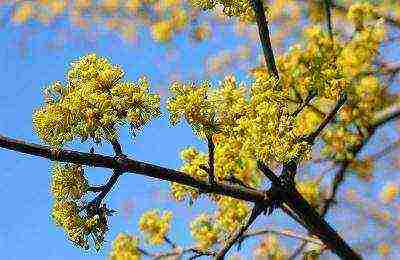 Ripe dogwood helps in the fight against colds, helps to normalize digestion. The berries contain a large amount of pectin, which removes toxins, radiation and toxins from the body. Traditional medicine recommends eating fresh dogwood for severe headaches and in the early stages of the development of multiple sclerosis. In these cases, the fruit, due to its rich mineral and vitamin complex, improves blood supply to the brain and blood circulation in general.
Ripe dogwood helps in the fight against colds, helps to normalize digestion. The berries contain a large amount of pectin, which removes toxins, radiation and toxins from the body. Traditional medicine recommends eating fresh dogwood for severe headaches and in the early stages of the development of multiple sclerosis. In these cases, the fruit, due to its rich mineral and vitamin complex, improves blood supply to the brain and blood circulation in general.
Cornel jam contains a lot of iron, which helps to increase hemoglobin. Cornel strengthens the walls of blood vessels, saturates cells with oxygen, in addition, it is often used in the treatment of such diseases:
- fever;
- various flu;
- scurvy;
- arthritis;
- anemia;
- measles;
- haemorrhoids;
- most skin diseases.
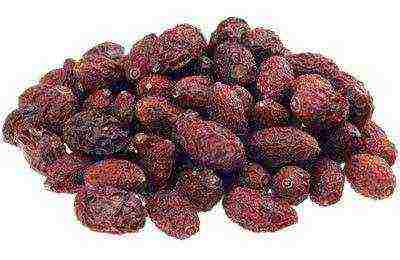 The people use not only fresh dogwood for medical purposes, but also dried dogwood, which is able to retain all its beneficial properties for up to 3 years. Dried fruits are beneficial for diabetes because help lower blood sugar, are used to make pain relievers. Special tinctures of dried dogwood are used as a lotion for dry and flaky skin.
The people use not only fresh dogwood for medical purposes, but also dried dogwood, which is able to retain all its beneficial properties for up to 3 years. Dried fruits are beneficial for diabetes because help lower blood sugar, are used to make pain relievers. Special tinctures of dried dogwood are used as a lotion for dry and flaky skin.
Shrub leaves can be applied to inflamed areas of the skin, to places where the rash appears.
Tea made from dogwood flowers and leaves helps with fever and frequent diarrhea.
You can get rid of pain and breakage in the joints by preparing a special bath, to which a decoction of bark and green leaves is added at the rate of 5 tablespoons per liter of water. The bark and leaf tincture is used as a natural diuretic and also helps cleanse the liver. Tinctures are prepared from the seeds that help with mental disorders. Also, this broth acts as a sedative.
Cornel is one of the most unpretentious fruit-bearing shrubs in terms of climatic conditions. But in order to get the richest harvest possible, you need to provide proper care for the plant in the first years of its life. A young seedling needs feeding, cutting and loosening the soil. Paying due attention to these aspects, in the future, the plant will reward an abundant amount of delicious berries.
Do you still think that getting rid of cardiovascular diseases is impossible?
- do you often have pain and discomfort in the chest?
- it seems to you that the heart is almost "jumping out" of the chest, then freezes for a while ...
- you have shortness of breath even after minor physical exertion….
- headaches, poor sleep, feelings of weakness and increased fatigue ...
- legs swell in the evening ...
Stop enduring, you can no longer wait, delay treatment. Read what Elena Malysheva advises both for the treatment and for the prevention of diseases of the cardiovascular system ...
about the author
Helpful article?
(
votes, average:
out of 5)
Dogwood - what is it? And what are the benefits of the plant? These and many other questions are often asked by people who see berries for the first time. These fruits are widely used to treat many diseases. There are many recipes for using dogwood.
In addition, the berries have found their way into cooking. They can be used to make delicious jam, tea, compote or jam. It is worth noting that dogwood has certain contraindications for consumption, which must be taken into account so as not to harm health.
general information
Dogwood - what is it? It's about a plant. The shrub is widespread in Asia and Europe. In total, there are 4 varieties of this plant in nature, which differ from each other in the appearance of the fruits. Berries can have a wide variety of shades of red and differ in their shape.
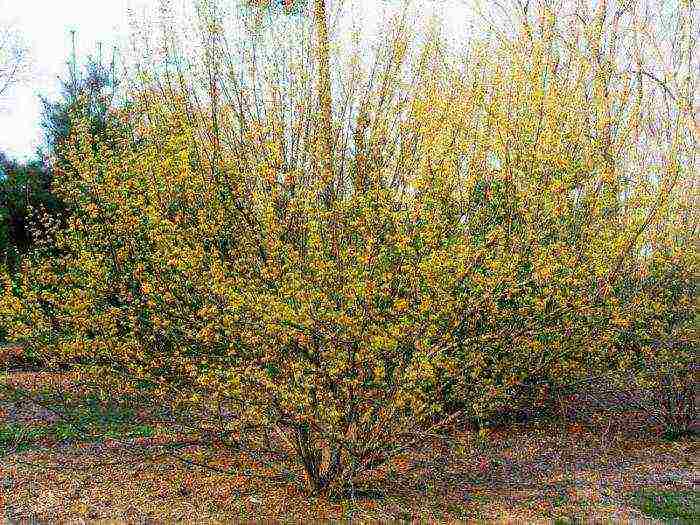 Some varieties can be pear-shaped, while others are round or oblong. Regardless of the dogwood variety, its berries are very healthy. The shrub adapts very well to any climatic conditions and has a life cycle of up to 250 years.
Some varieties can be pear-shaped, while others are round or oblong. Regardless of the dogwood variety, its berries are very healthy. The shrub adapts very well to any climatic conditions and has a life cycle of up to 250 years.
Despite the fact that the fruits ripen only in late autumn, their flowering occurs very early. Flowering usually begins in early spring, when leaves have not yet appeared on the shrub. There are many different recipes for making these fruits.
Most popular varieties
Many people prefer to grow dogwood in their summer cottage. The description of the varieties will help you decide which type of plant is best to plant. Now many garden forms have been bred, the fruits of which weigh about 8 grams. You need to collect them as they ripen. The most common varieties widely used in summer cottage gardening are such as:
- "Vavilovets".
- "Vladimirsky".
- "Firefly".
- "Elena".
- "Coral".
- "Elegant".
Vavilovets is an early variety and ripens in mid-August. Its fruits are large enough, pear-shaped and weigh 6-7.5 g. The berries have a deep red flesh color, which becomes somewhat lighter near the stone.
Cornelian variety "Elena" belongs to the early and begins to ripen in mid-August.When fully ripe, the berries have a deep red color, however, unlike all other varieties, they do not turn black.
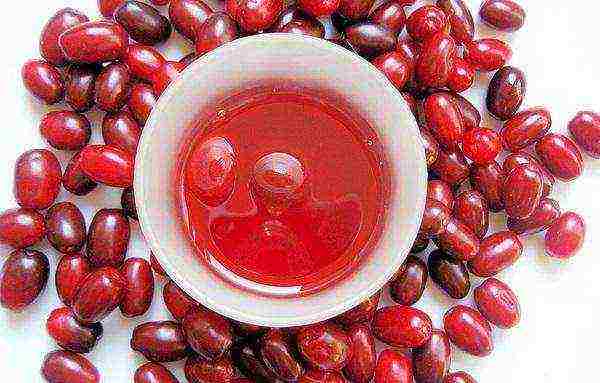
Variety "Vladimirsky" ripens in early September. It is the most fruitful and large-fruited. The fruits are approximately the same size and weigh 7.5g. The berries are attached very tightly.
The medium-late variety "Coral" ripens until mid-September, and then begins to crumble from the trees. The berries are quite small, have a weight of 3.5-4 g and a round shape. After full ripening, the fruits become very sweet, with a rather unusual and uncharacteristic taste for dogwood, which somewhat resembles a sweet cherry.
The "Firefly" dogwood variety ripens at the end of August. The fruits are one of the largest in size, bottle-shaped with a thickened neck. Their weight is approximately 7-7.5 g.
The "Elegant" variety begins to ripen in the first half of August. Its fruits are bottle-shaped with a thin neck. The mass of the berries is 4.5-5 g. Ripe fruits are red-black in color.
How to grow a dogwood from a stone?
For plant propagation, dogwood seeds are often used, however, this can also be done in a vegetative way. Before growing a shrub with a bone, you need to properly collect the planting material. For planting, dogwood seeds must be harvested as the fruit ripens. Then they need to be sorted, mixed with coarse river sand and planted in late autumn or early spring next year.
For a more successful planting and easy maintenance, you can plant dogwood seeds immediately after harvesting. They are planted in the ground to a depth of 5 centimeters. Sometimes, due to prolonged non-germination, it may seem that the seeds will not germinate. However, this is not the case, the most important thing is to ensure regular watering and prevent them from drying out. For faster seed germination, they must be kept for 3 days in water, a solution of slaked lime or sulfuric acid.
 For the normal formation of the dogwood tree, the seedlings at the sowing site should be for 1-2 years, and then they are dug up and planted on the beds, after having slightly pruned the ground part of the shoots. In this place, seedlings grow for 3 years, until their root system and trunk are strengthened. Then the landing is carried out to a permanent place. The distance between the bushes when planting should be about 60 cm.
For the normal formation of the dogwood tree, the seedlings at the sowing site should be for 1-2 years, and then they are dug up and planted on the beds, after having slightly pruned the ground part of the shoots. In this place, seedlings grow for 3 years, until their root system and trunk are strengthened. Then the landing is carried out to a permanent place. The distance between the bushes when planting should be about 60 cm.
Periodically, it is necessary to apply dry mineral fertilizers under the bush and together with watering. It is imperative that the soil is loosened periodically, since it should not be too dense. To preserve soil moisture, mulching is carried out. Shrubs grown in this way can have absolutely any fruit, since they are susceptible to cross-pollination. To grow shrubs with maternal characteristics, propagation must be carried out using cuttings.
How to grow from cuttings and cuttings?
Planting dogwood in the suburbs is mainly carried out by using cuttings or cuttings. To do this, the lower shoots in the spring need to be bent a little, laid in shallow holes, sprinkled with earth and watered. Rooted plants for the next spring must be separated from the shrub and planted in a permanent place.
Shoots of annual plants are suitable for propagation by cuttings. In addition, for them to take root well, you need to plant them immediately after cutting. In order for the dogwood tree to grow well, it is imperative to keep the soil moist during the rooting period of the cuttings. It should be noted that the shrub grows very slowly, but is characterized by increased drought resistance. It is practically not affected by pests and diseases and feels good in partial shade. It grows very poorly in open sunny places, this also degrades the quality of the fruit. For a good harvest, it is best to plant 2-3 different varieties nearby.Large-fruited dogwood seedlings can be planted next to early varieties, as this will help to achieve faster ripening of the fruit.
Shrub care and pruning
It is not necessary to provide special conditions for growing dogwood, as this plant is unpretentious. All that is required is:
- watering;
- loosening the soil;
- top dressing;
- treatment for diseases and pests;
- timely pruning.
In the first year of growing dogwood, loosening to a depth of no more than 10 cm and watering are required. Subsequently, it is very important to remove shoots and excess growth in a timely manner. In fruiting trees, only sanitary pruning should be carried out, removing excess or diseased branches.
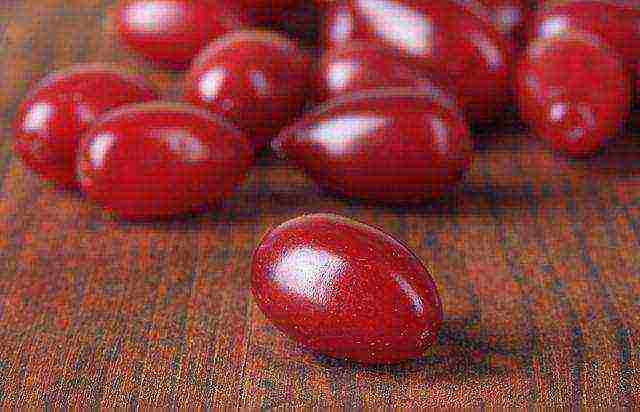 Pruning is carried out in the spring to give the shrub a decorative look and longer fruiting. When pruning, only those parts of the plant that are in the developmental stage should be left. Dying tops and stems are pruned to healthy wood. Old shoots must be completely cut.
Pruning is carried out in the spring to give the shrub a decorative look and longer fruiting. When pruning, only those parts of the plant that are in the developmental stage should be left. Dying tops and stems are pruned to healthy wood. Old shoots must be completely cut.
How and when to pick berries?
Many people want to know dogwood - what it is, how to properly use this remedy for maximum benefit. The fruits are ready to eat when they turn bright red. Strongly overripe dogwood is not suitable for consumption. For harvesting fruits, dry, good and sunny weather must be sure. Do not collect dogwood after rain.
The plucked fruits should be placed in a dry place, where they should ripen for 10 days. During this time, the product will become more intense in color, acquire a pleasant taste and aroma.
The nutritional value
The benefits and harms of dogwood are hidden in its composition, since the berries contain many different substances. It is worth noting that the fruits contain a lot of water, due to which the pulp always remains juicy. Berries are rich in ascorbic acid and in terms of the content of this vitamin, they are significantly superior to black currants. Thanks to this composition, the fruits help to normalize the immune system.
 Fresh and dried berries contain many minerals required to normalize metabolic processes. In addition, they are required to ensure the vital activity of all human organs and tissues. Cornel contains a lot of fiber required to normalize digestive processes and cleanse the body of toxic substances and toxins.
Fresh and dried berries contain many minerals required to normalize metabolic processes. In addition, they are required to ensure the vital activity of all human organs and tissues. Cornel contains a lot of fiber required to normalize digestive processes and cleanse the body of toxic substances and toxins.
What can be combined with dogwood?
You need to know not only what it is, dogwood, but also how to properly consume the fruits and what they are best combined with. You can consume it with any berries, honey, apples. The fruits are added to meat dishes, they are in good harmony with poultry and fish. You can use it as a condiment.
Culinary processing allows you to preserve all the useful qualities of fresh berries, as well as their excellent taste and aroma.
Useful properties of the plant
There are certain benefits and harms of dogwood, which must be taken into account when using this berry. Decoction of fruits has long been used to treat measles, colds, smallpox, scarlet fever. Fresh berries are consumed for anemia and stomach diseases, and a decoction of the bark and leaves - for tuberculosis.
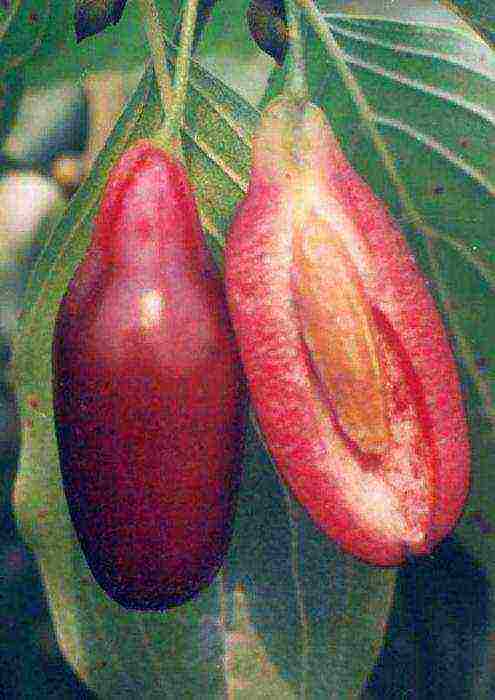 Cornel helps to strengthen the immune system, therefore, it should be gradually introduced into children's dietary food. Fresh berry juice helps to normalize blood sugar levels. Not only the fruits themselves are useful, but also the bones, from which substitutes for tea and coffee are prepared.
Cornel helps to strengthen the immune system, therefore, it should be gradually introduced into children's dietary food. Fresh berry juice helps to normalize blood sugar levels. Not only the fruits themselves are useful, but also the bones, from which substitutes for tea and coffee are prepared.
Indications for use
Cornel helps not only strengthen the immune system, but also improve mood and appetite. It is an excellent prophylactic agent that forms resistance to poisons. For women, this remedy helps to reduce menstrual pain, as well as blood loss during childbirth.
Consuming dogwood will help cleanse the liver of toxic substances. This remedy helps to increase potency in men and has a diuretic effect. Berries are widely used in cosmetology as cleansing and toning masks. The seed infusion will help get rid of dandruff.
Can I be used during pregnancy?
Before consuming dogwood during pregnancy, you should consult your doctor. He will tell you in what quantities you can eat this berry. It is contraindicated for pregnant women to consume Jamaican dogwood, as this berry is quite toxic and can harm the fetus.
Cornel can help eliminate fever during pregnancy and is considered a good alternative to medication. In addition, this berry will help to ensure the normal development of the fetus.
Harm and contraindications
However, despite the fact that dogwood is very useful, it also has certain contraindications. You should not use it with high acidity, a tendency to constipation, with exacerbation of ulcers and gastritis.
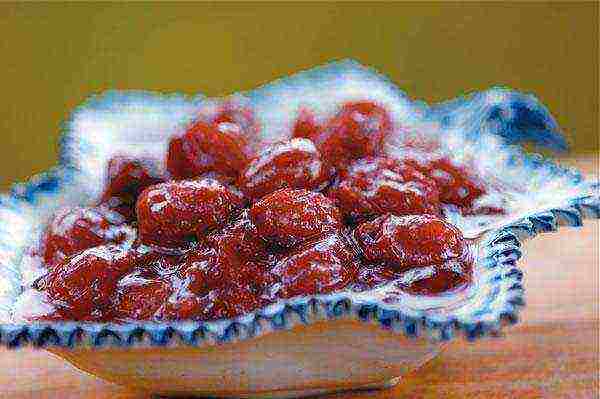 Natural energetic is contraindicated for insomnia and excessive nervous excitability. It is undesirable to consume it for elderly people. In addition, it is forbidden to eat fruits with a tendency to allergies.
Natural energetic is contraindicated for insomnia and excessive nervous excitability. It is undesirable to consume it for elderly people. In addition, it is forbidden to eat fruits with a tendency to allergies.


